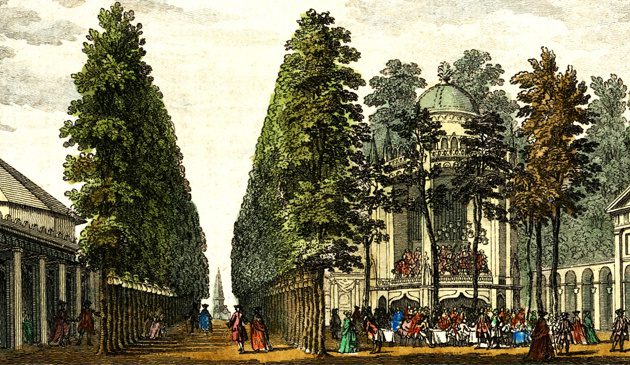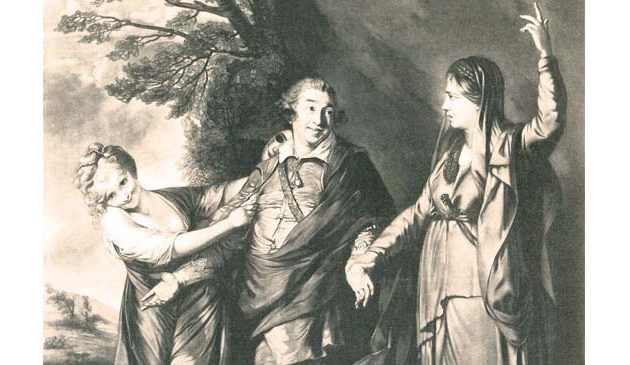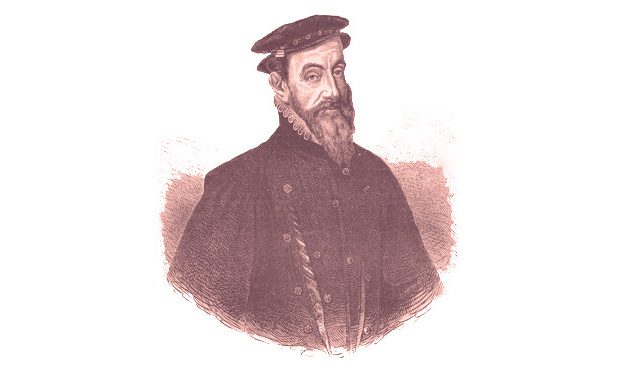Dr. Samuel Johnson

The bronze statue of Johnson at the rear of St. Clement Danes church – which he attended – in the Strand, facing along Fleet Street. It was erected in 1910, a gift of the church’s rector. The plinth features on each of three faces: James Boswell; Johnson and Mrs. Thrale; and Johnson and Boswell.
In September 1777 Samuel Johnson was discussing with James Boswell (who was later to become his biographer) whether the latter, a Scotsman, would tire of London should he move to the city. Johnson replied with the most famous of his many quotes: “No sir, when a man is tired of London, he is tired of life”. Dr. Samuel Johnson, perhaps now most famous for the creation of the first major dictionary of the English language, was regarded as the leading literary Englishman of the mid-18th century. Other notable works included a study of Shakespeare’s plays and a major critical study of English poets. The contemporary novelist Charlotte Lennox considered him “the greatest genius of the present age”.
Johnson was a physically large man with a booming voice who considered conversation as a sport, with debates to be won using his verbal skills. At times he could be overbearing and downright rude but below the large, loud and often strange exterior was a kindly man who felt obliged to help those around him less fortunate than himself.
Born in Lichfield, Staffordshire in 1709, the son of a local bookseller, Johnson suffered from poor eyesight, having to read books up close to his face. He was also deaf in one ear. A precocious child, he had the ability to memorise a text after just a brief reading. From an early age he stood out for his unusual mannerisms and habits, which can now be understood as Tourette’s syndrome. It produced regular bouts of depression that he thought to be madness. When the artist William Hogarth first encountered him he thought him “an ideot” until Johnson began speaking, and his eloquence became clear.
Johnson studied at Oxford but left due to lack of funds, and drifted into employment as a teacher and then a journalist. Aged only 25 he married a widow almost twice his age. An attempt at running his own boarding school near Lichfield was a failure. In 1737 he set off to seek employment in London together with one of the school’s pupils, the teenage David Garrick, who did indeed achieve fame and fortune as the most celebrated actor and impresario of his time. Arriving without funds he spent his time wandering the city, delighting in its taverns and coffee houses. A meagre income as a writer on Gentleman’s Magazine allowed him to bring his wife Tetty to London. Articles on Parliamentary proceedings were written as though fiction, in which he wrote of the American colonies as ‘Columbia’, a term that became widely used for North America. His first major published work, the poem London, appeared in 1738.
At that time the English dictionaries that existed were of poor quality, without comprehensive and accurate definitions. A bookshop owner gave Johnson the idea of producing one of greater accuracy and in 1746 he agreed a fee to produce such a work. With funds available, he and Tetty moved to a large new house at Gough Square off Fleet Street and six assistants were employed to help with the task. In France 40 scholars of the Académie Française took 40 years to produce a dictionary of their language but Johnson boasted that an Englishman could complete the equivalent work in just three. In creating it he read not only works of literature but also history, science, theology, and other subjects. Despite his intentions, Johnson failed to prevent it becoming an objective work, with numerous personal opinions and jibes included within the definitions. The description for the word ‘dull’ became: “To make dictionaries is dull work.” The task eventually took three times longer than planned but Dictionary of the English Language was published in two large volumes in April 1755 and contained almost 43,000 entries. It remained the pre-eminent British reference until the publication of the Oxford English Dictionary in about 1930.
At the same time as working on his dictionary, needing to find additional income Johnson founded a twice-weekly publication, in which he anonymously printed essays on moral topics. The Rambler was inspired by earlier periodicals such as the Tatler and the Spectator. It sold for two pence per copy and appeared continuously for two years between 1750 and 1752. Unfortunately, the audience was not large enough to make the venture profitable, leading to the paper’s eventual closure.
For almost 50 years Johnson lived at various rented properties around Fleet Street and the Strand. During the early years he rented cheap bachelor apartments. After Gough Square (which is now the Johnson museum) the Johnson household moved to Staple Inn, then Inner Temple Lane, Johnson Court and finally Bolt Court.
Despite the acclaim given to Johnson’s dictionary he received no further income from it beyond the original fee agreed. His writing was producing little remuneration and he and Tetty continued to live on his meager earnings, often surviving by borrowing money. During most of the time she lived in London Tetty suffered from illness. In 1752 she travelled back to the Midlands where she died that March. Johnson was mortified and mourned for her on the anniversary of her death throughout his life.


